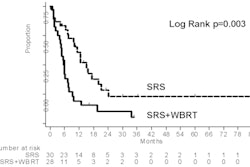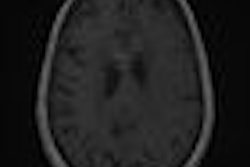Perioperative high-dose-rate brachytherapy, when combined with intermediate-dose external-beam radiation therapy (EBRT), can be effective as an alternative to full-dose EBRT in patients with unirradiated squamous cell cancer of the oral cavity and oropharynx.
The outcomes of the 40-patient clinical trial were published in the January-March 2009 issue of Brachytherapy (Vol. 8:1, pp. 26-33). The study was conducted by researchers at the Clínica Universidad de Navarra in Pamplona, Spain.
The 40 patients were treated with surgical resection and perioperative high-dose-rate brachytherapy between 2000 and 2006. They received a dose of 4 Gy each in six treatments for R1 resections, while 45 Gy administered in 25 fractions of external-beam radiation therapy was added postoperatively. Patients with stage III or IVa tumors and some recurrent cases also received concomitant cisplatin-paclitaxel chemotherapy with the EBRT treatment.
The advantage of this approach was a reduction of total treatment time, according to lead author Dr. Rafael Martínez-Monge, a radiation oncologist at the hospital. Administering part of the radiotherapy using brachytherapy reduced treatment from seven weeks to five weeks. Because the patients were radioactive only during the actual administration of the treatment, they were able to stay in regular hospital rooms versus being isolated in a lead-lined room.
Thirty-nine of the patients were able to complete the treatment. Eleven patients, or 27.5%, developed Radiation Therapy Oncology Group (RTOG) grade 3 or greater toxicity. Four patients, or 10%, developed RTOG grade 4 complications requiring a major surgical procedure, and one patient died of bleeding.
Severe complications were more frequent with posteriorly located brachytherapy implants than with anterior implants. This has resulted in shifting the brachytherapy dose to the closest lower level, according to Martínez-Monge. However, local control and toxicity rates were similar to those expected after standard chemoradiation, the seven-member research team reported.
Patients were followed for a median of 50 months; the longest patient follow-up was 86 months and the shortest was 2.5 months. Based on seven-year actuarial rates, the treatment achieved a local control rate of 86% and locoregional control of 82%.
Related Reading
High-dose brachytherapy effective for soft-tissue sarcoma in children, May 15, 2008
Potent brachytherapy effective against vaginal cancer, March 6, 2008
Copyright © 2009 AuntMinnie.com



















